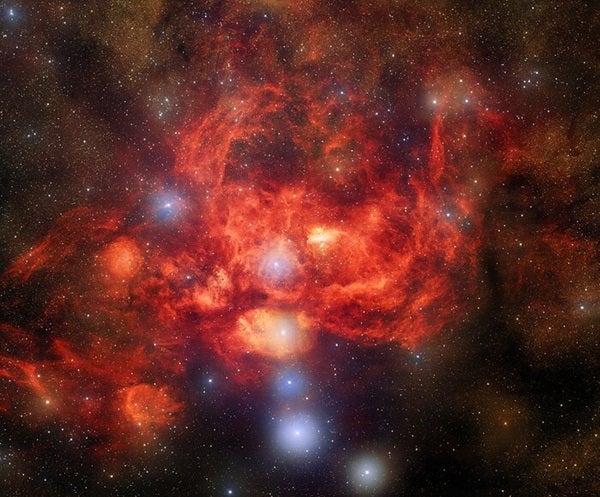Within the constellation Scorpius the Scorpion lies another galactic arthropod, the Lobster Nebula (NGC 6357). And recently, this Lobster was photographed by the Dark Energy Camera (DECam) on the Víctor M. Blanco 4-meter Telescope at Cerro Tololo Inter-American Observatory in Chile.
The resulting image of the red cosmic crustacean, located about 8,000 light-years away, showcases swirls of colorful gas that stretch across a region some 400 light-years across. Meanwhile, the open star cluster Pismis 24 peeks out from the center, displaying a whole host of young, massive stars.
To capture the shot, DECam utilized a new range of special narrowband filters, which reveal information about the internal motions, temperatures, and chemistry of the Lobster. To construct the colorful image, researchers captured many shots through different filters before layering them to create a single composite that approximates what the Lobster Nebula would look like if it were much brighter, according to a news release from NoirLab.
This new view of the Lobster Nebula was presented at the DECam “10 years: Looking Back, Looking Forward” conference last week. Over the past decade scanning the sky, DECam has captured more than a million images, averaging about 400 to 500 images per night.
DECams 570-megapixel, wide-field camera was originally designed to work on the Department of Energy’s Dark Sky Survey. However, since 2019, the ultra-powerful camera has been utilized for many other astronomical projects — and it shows no signs of stopping soon.










